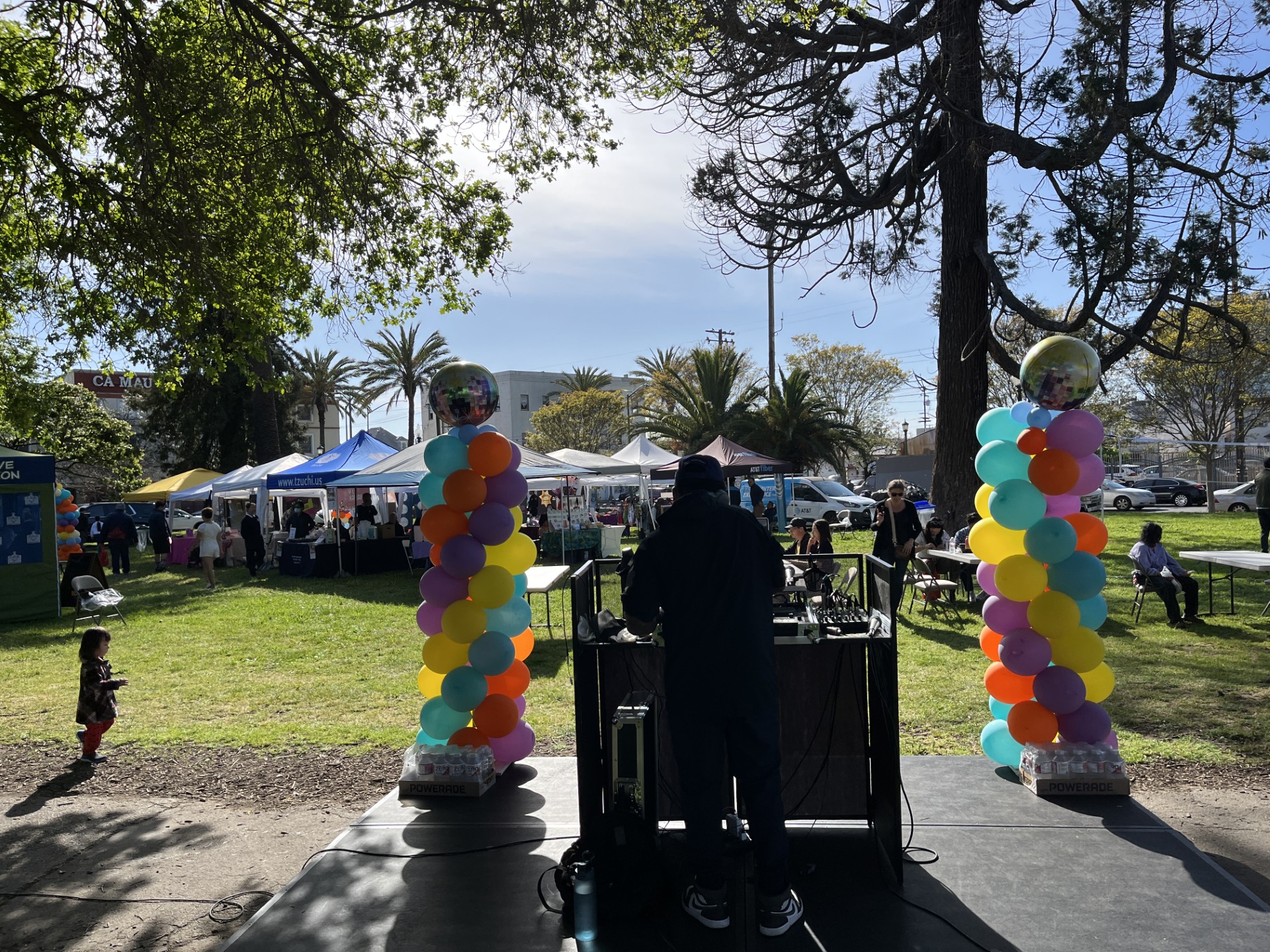Beneath the tower on the Stanford campus named for President Herbert Hoover, Katharina Friedla wrestled on a pair of blue latex gloves and peeled open an ancient looking album covered in red velvet with “1937” scripted in metal next to an imposing circular emblem featuring an iron black eagle – a symbol for the Nazi party.
For Friedla, who was recently hired to oversee the European archives of the prestigious Hoover Institution — the public policy think tank and research archive on the Stanford campus — the album, though ominous, seemed a treasure of historic proportions.
“This is the perpetrators’ perspective,” said Friedla, whose official title is Taube Curator for European Collections.
Friedla’s work unearthing historic artifacts from 20th century Europe comes from a poignant vantage point. She’s of Jewish heritage as well as a German citizen raised in Berlin – the Nazi seat of power during World War II and responsible for many of the atrocities she studies.
Get a weekly recap of the latest San Francisco Bay Area housing news. Sign up for NBC Bay Area’s Housing Deconstructed newsletter.
Friedla not only shepherds over the institution’s European archive, she also travels to Europe several times a year hunting for more artifacts to add to the vast collection, which includes thousands of photos, documents and personal testimonies.
“Primarily, I’m looking for personal collections because, according to the law, we are not allowed to transfer materials which were issued by governmental authorities," Friedla said.
Inside a large austere reading room within the institution, Friedla gingerly opened the velvet red Nazi photo album and began to flip through its pages, revealing images of rallies and meetings of high-ranking Nazi officials. The book, she explained, was a sort of year book created annually by Nazi leader Julius Streicher to document his propaganda activities during the year.
“It was like a gift for Hitler,” she said, stopping on an image of Streicher meeting an enthusiastic crowd of German citizens.
She moved onto another book created by Streicher, this one a children’s book depicting unflattering images of Jews used as anti-Semitic propaganda targeted at German children. One illustration cautioned German children to avoid being treated by Jewish doctors.
“I think it’s extremely important to preserve this material,” Friedla said, flipping through the images. “It’s extremely important documentation about the unprecedented events which we faced during the 20th century and the second World War, but also the Holocaust.”
Back in her office, Friedla pulled up the same images from the photo album onto her computer monitor. The institution is working to digitize more of its collections and make it available online for research and public interest.
The European collection leans heavily on World War II and the persecution of the Jews before and during the war. Friedla’s position is sponsored by the Taube Family Foundation and its founder Tad Taube, a Polish Jew who escaped Poland months before the German invasion in 1939, which ultimately lead to the deaths of 3 million Polish Jews. Some members of Taube’s family were among the victims.
“History determines what’s going to happen in the future, almost always,” said Taube, sitting in his Belmont office surrounded by photos and memorabilia. “You can almost always predict what future events are going to be based on historical records, so that’s a very important scholarly endeavor.”
Friedla sees that worldview in the archive and in her own work, finding parallels from wars past that serve as maps for navigating the future. She finds many events in World War II which invoke comparisons with the current war in Ukraine.
“If we’re looking toward Europe and the current war in Ukraine, it’s extremely important to have access to this documentation,” she said. “Because it tells a lot about the propaganda and how it worked and about the atrocities and what happened years ago, and there are some similarities.”
Friedla emphasized the critical importance of preserving and sharing documentation from the World War II, especially in a time of what some warn as rising anti-Semitism across the U.S. and in the Bay Area.
In her native Germany, where as a child she watched the wall separating East and West Berlin come down, Friedla said people still live in the shadow of the war.
“It’s still a topic in the country and I think nowadays it’s also a part of the German identity, which is good because we have to still be remembered and remember what happened," Friedla said.



